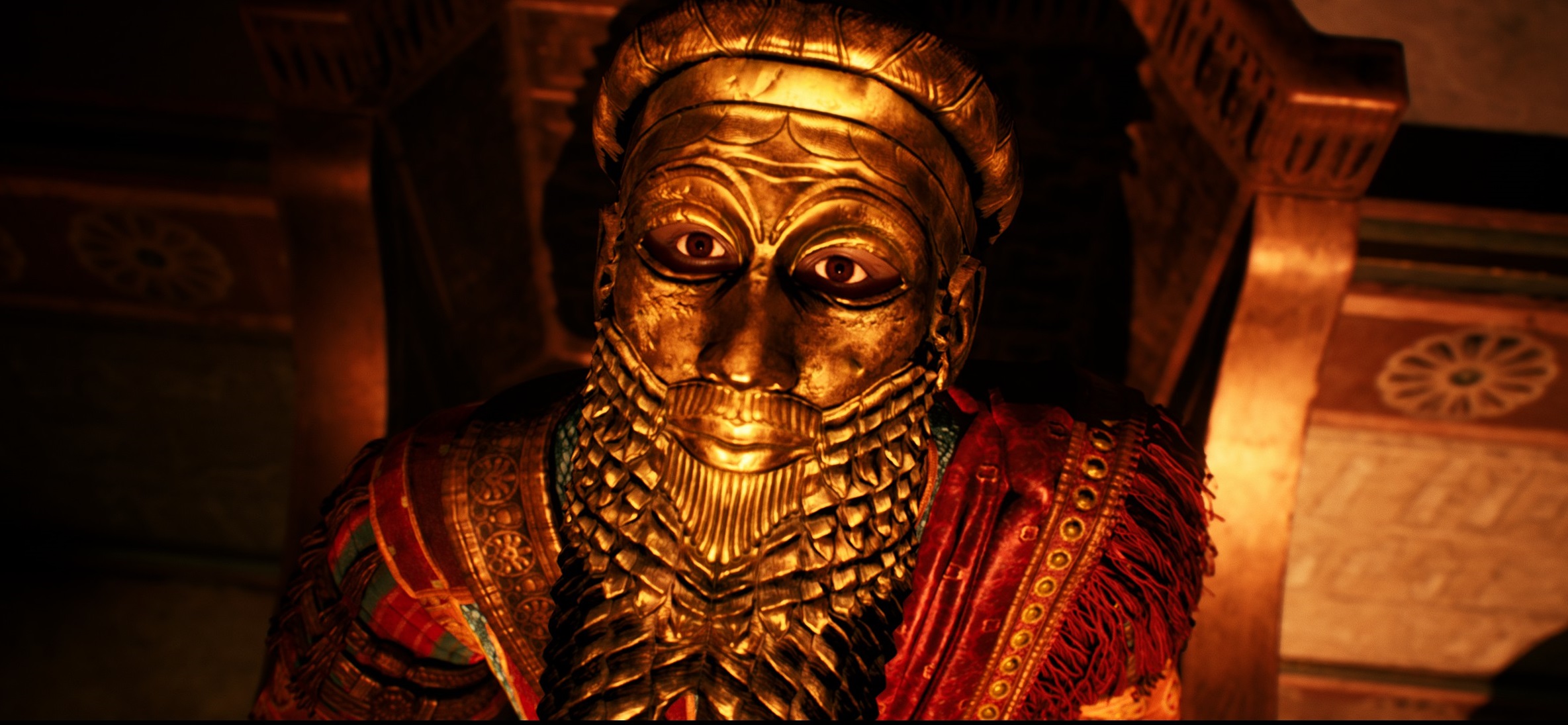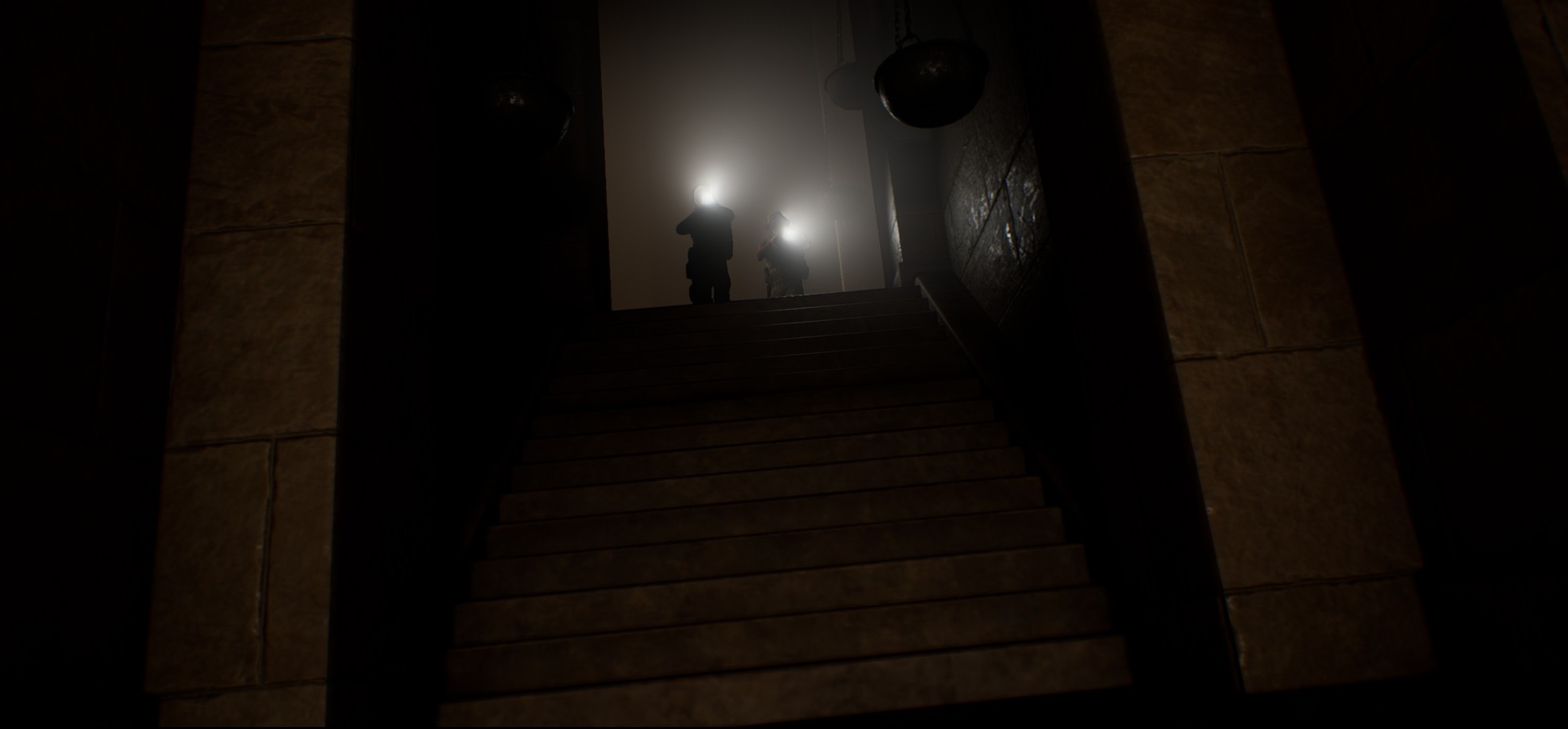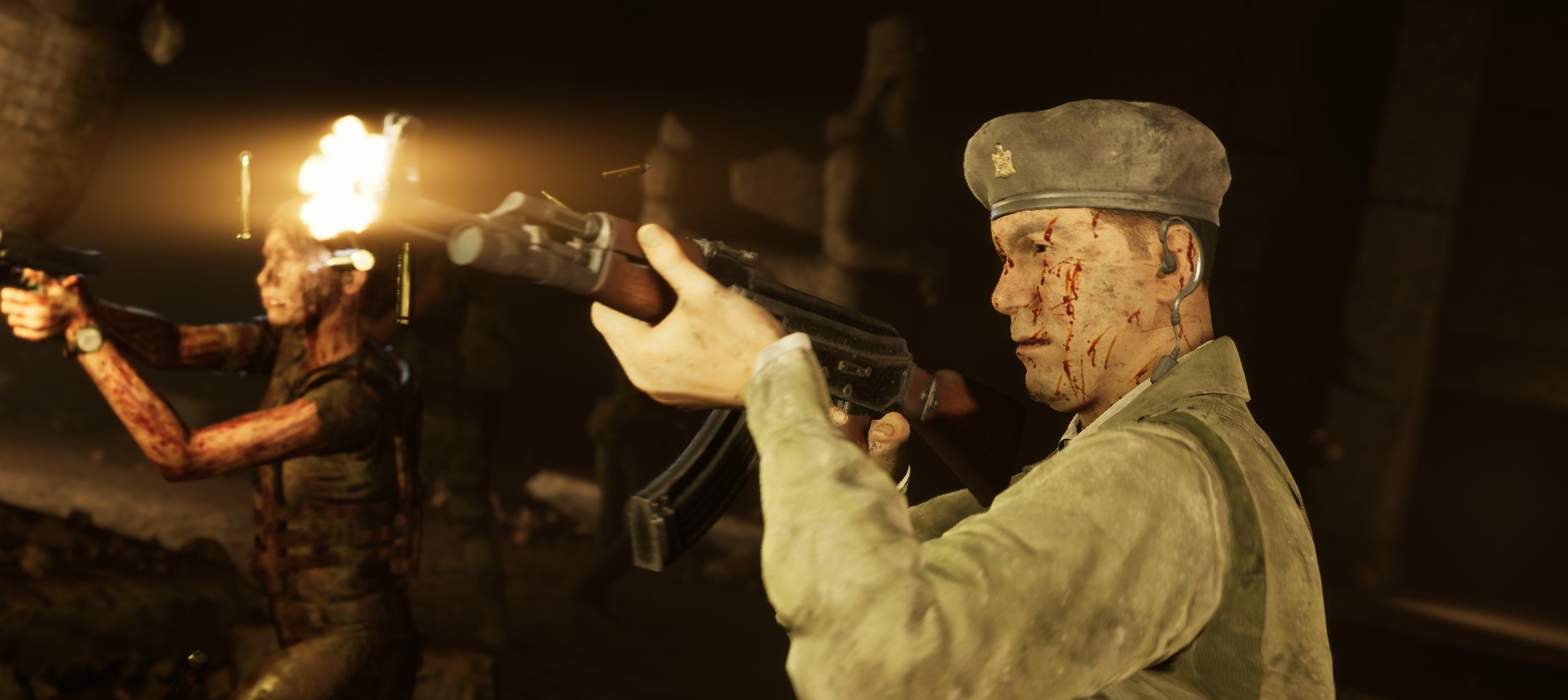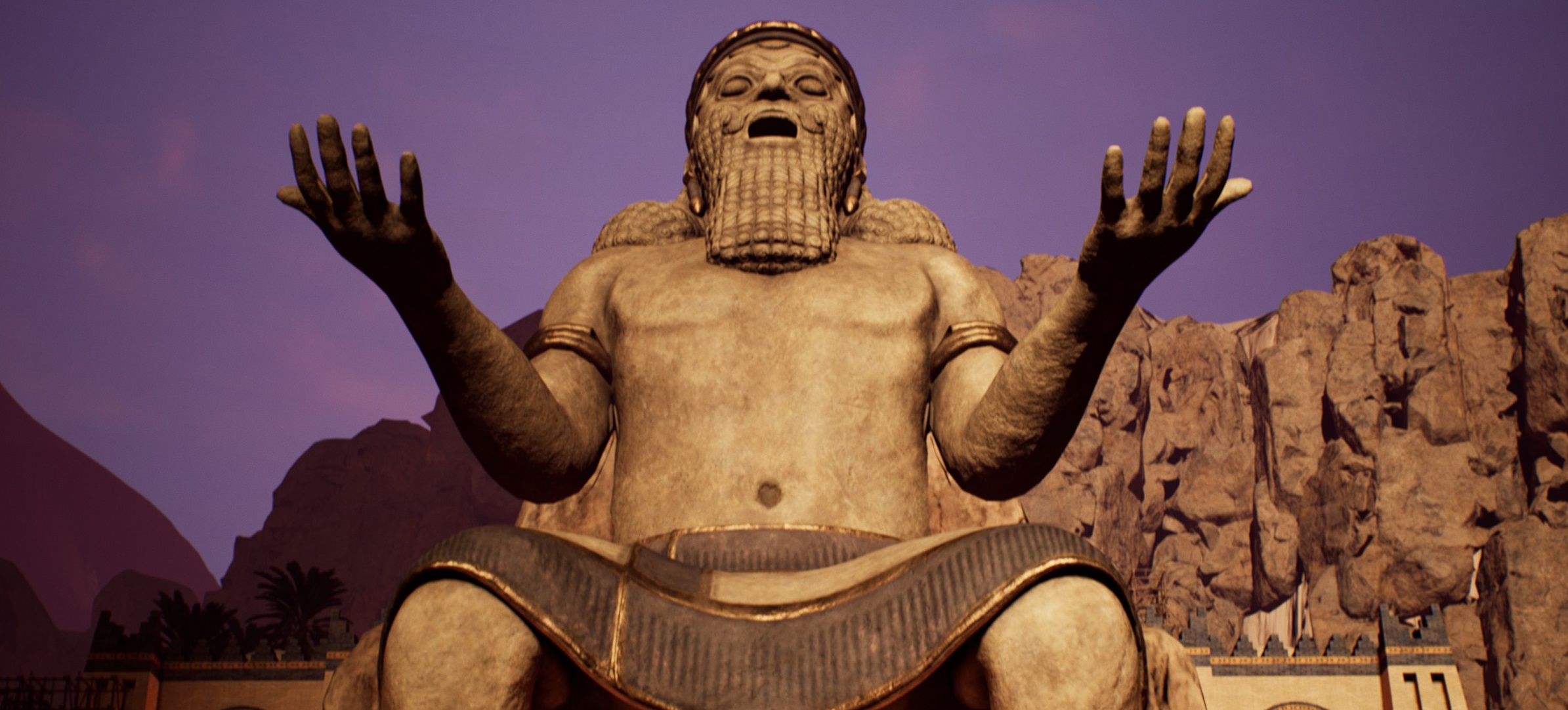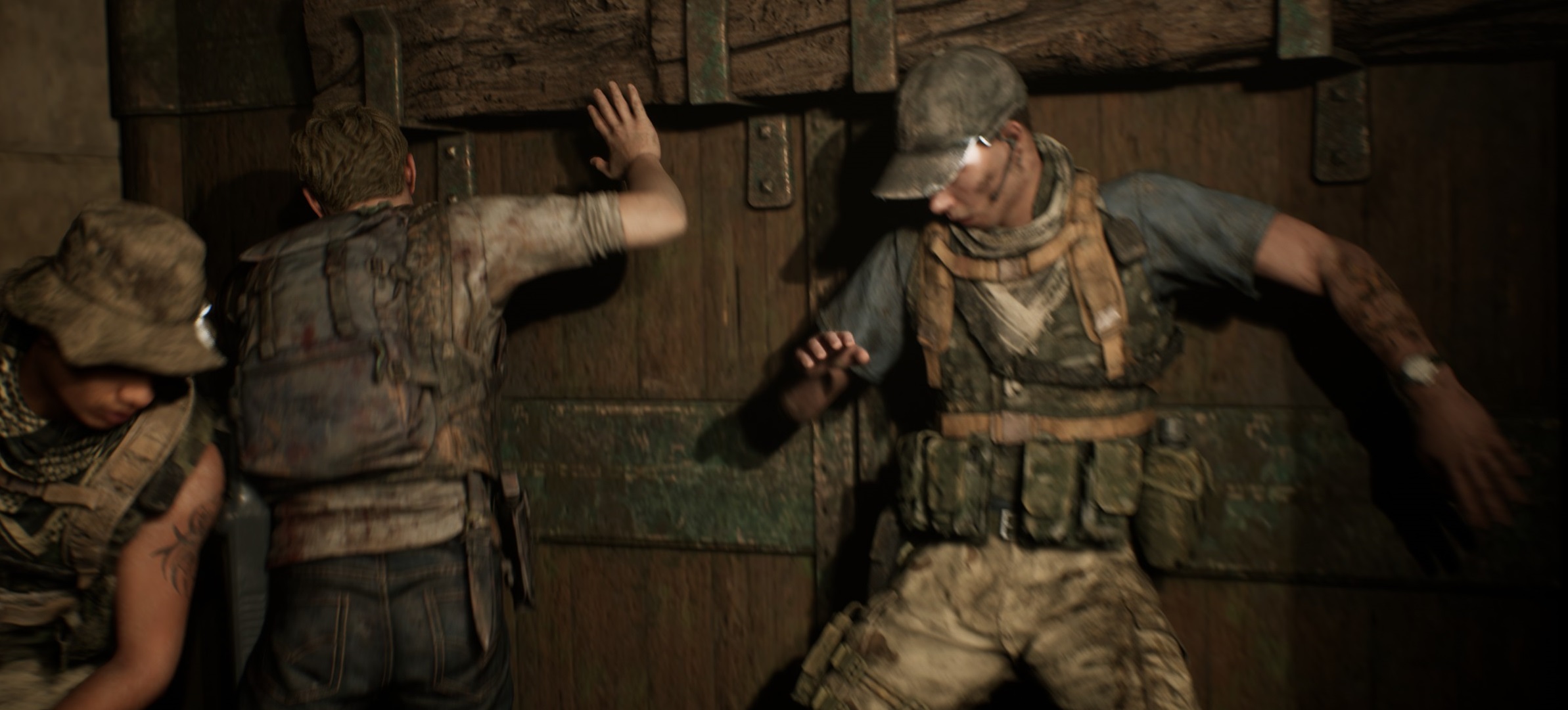Our Verdict
Great monsters, stunning locations and a quality mystery makes this one of Supermassive's best.
PC Gamer's got your back
What is it? The third part of a horror anthology, this time set in an ancient Sumerian temple.
Expect to pay £25/$30
Developer Supermassive Games
Publisher Bandai Namco
Release October 22
Reviewed on GTX 1080 Ti, Intel i7-8086K, 16GB RAM
Multiplayer Yes
Link Official site
The Dark Pictures Anthology is a series enthralled by cinematic horror, and its setup, with each entry spinning a new yarn, has allowed Supermassive to cast a wide net. Following Man of Medan's ghost ship and Little Hope's witch problem, we now find ourselves exploring a Sumerian temple with marines and CIA agents in House of Ashes. The switch from civilians and jump scares to soldiers and gunfights is a significant one, and initially gave me pause, but the anthology is all the stronger for it.
Soldiers going on a mission and discovering something monstrous or supernatural is, of course, a classic genre trope that's produced some of my favourites, from Aliens to Dog Soldiers. But for a series that owes more to adventure games than action romps, heavily armed jarheads seemed like an odd choice. I shouldn't have been worried, though, because it turns out that House of Ashes' gruesome bat-like antagonists don't give a shit about bullets.
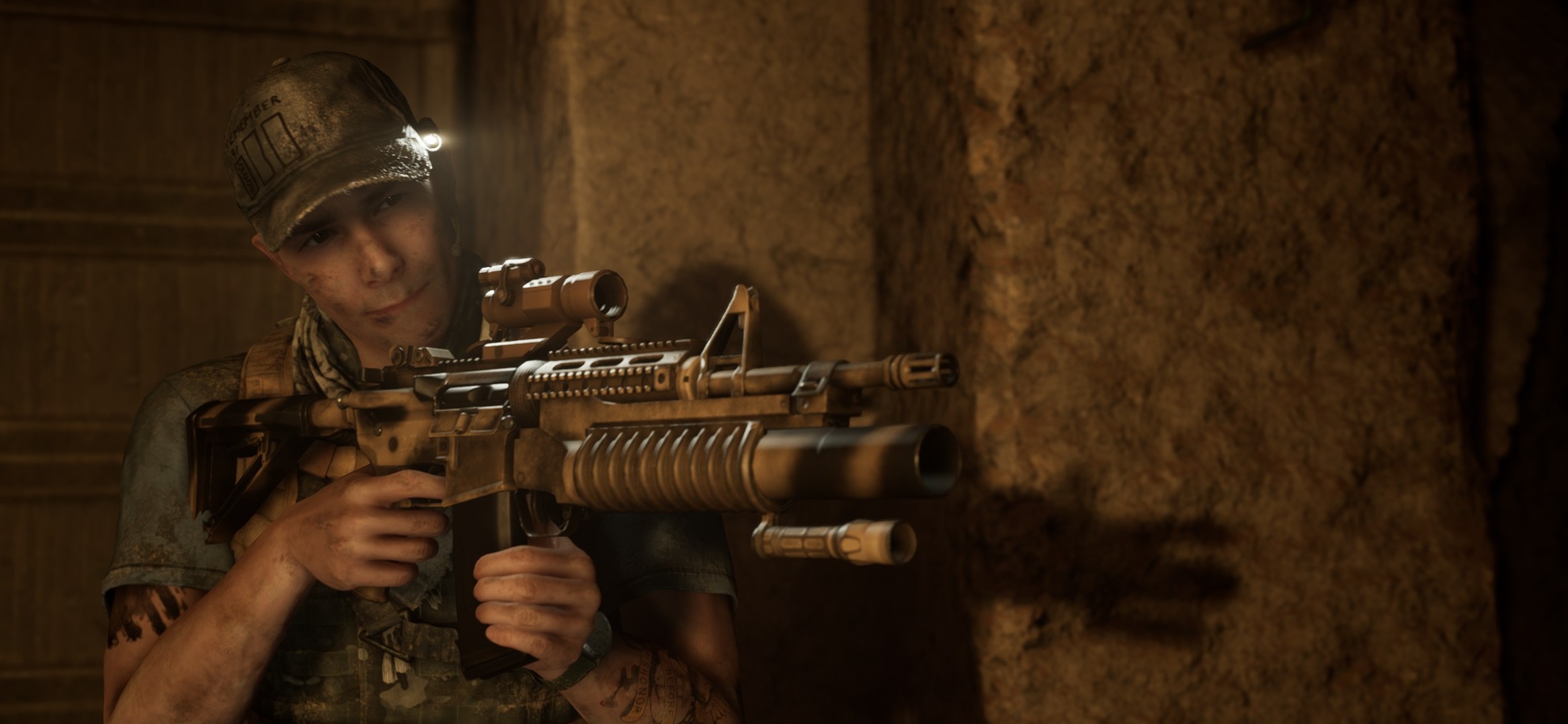
This doesn't stop the marines, or the pair of Iraqi Republican Guards that fall into the Sumerian temple with them, from expending a lot of ammo. And explosives. When they aren't impotently shooting monsters, they're shooting each other. There are a lot of long, flashy QTEs, and they rank as some of Supermassive's most entertaining, and certainly most elaborate.
Carry a big stick
One of the Republican Guards, Salim, is playable, and he features in most of the top brawls. He gets his hands on a big metal bar early on that I swear must be imbued with some mystical powers, and boy does he put it to good use, saving lives, impaling monsters and tossing it like a javelin—honestly, he's so good with this thing that the Avengers should sack Hawkeye and hire this dude. Aside from being an ass-kicker, Salim also gives us the crucial Iraqi perspective, balancing out the initially gung-ho attitudes of the Americans.
While House of Ashes' monsters like to lurk around in the dark, Supermassive doesn't hold them back too much. They're revealed quickly, and from there on you'll see them a lot, especially their hideous claws, which constantly creep out of door cracks. They tick all the movie monster boxes: they're disgusting to look at, they make bone-chilling noises, they laugh at bullets, but they have some glaring weaknesses that the survivors will, naturally, learn to exploit.
Despite a stronger focus on lively action sequences, House of Ashes makes a lot of room for critiques of the Iraq War, personal rivalries and even a doomed love triangle. It's all fodder for the horror, fostering tension and setting up potential betrayals. You'll get a few opportunities to really screw over your 'allies' at key moments, or you can try to make everyone BFFs. You're the one making the choices, but it's hard not to get caught up in what the characters are feeling. Their personalities and relationships are established early on, and I found myself doing the things that made sense for them rather than making the smart calls.
Take, for example, the well-trodden trope where a survivor is injured or infected. House of Ashes likes this one a lot. There was one instance in particular where my co-op buddy and I purposefully made what was so clearly the wrong choice, over and over again. The game kept giving us chances to kill or leave a character who was obviously going to bring about disaster, but after hearing the marines yammering on about never leaving anyone behind, the bad choice was the clear winner. And horror is all about courting disaster. A horror movie where everyone makes rational decisions is a boring horror movie.
Keep up to date with the most important stories and the best deals, as picked by the PC Gamer team.
It's amazing that I made it out with only one main character dead. Eric, the USAF Colonel running the operation didn't survive the night, but he was a bit of a loser, an insecure 'nice guy', so that's fine. House of Ashes nails the horror trick where, if you're not rooting them for them to live, you're having a good time rooting for them to die. Not that I'd planned Eric's death, which was sealed after a much earlier bad decision.
Quick and easy
There are consequences to failing a QTE, but that's not how Eric died. In fact, I succeeded in one to let him make a last heroic act. Choices determine who lives and dies more than dexterity. And while they're intense, the QTEs are still simple and give you plenty of warning beforehand, preparing you for their imminent arrival and even letting you know what kind of QTE is coming up.
Little Hope is where Supermassive started adding this helpful context, but House of Ashes continues in this vein, even if it's just with little things like making it clear when an interaction will move the scene forward. You know not to touch it until you've finished exploring. This is particularly beneficial in co-op, so you won't be the person who stopped their buddy from looking at more reliefs of Sumerian demons or diary excerpts from the '30s.
The unfortunate quintet become a band of amateur archaeologists, with the soldiers following in the footsteps of an old expedition. House of Ashes continues the anthology's penchant for playing with real myths and historical events, this time revelling in Mesopotamian legends and the 'Curse of Akkad', a poem detailing the destruction of the Akkadian Empire after the Emperor Naram-Sim declared himself a god and plundered a temple. In the poem, the gods got revenge on ol' Naram-Sim thanks to an invasion from the Gutian people. In House of Ashes' prologue, however, the Gutians are not nearly as big a problem as the blood-sucking underground monsters.
A Sumerian temple is a bit more grand than a wee New England town or a rusty boat, and the mystery at the heart of it—just what the heck are these beasties?—meant that I was ravenous for any document, tablet or diary I could get my hands on. Throughout, my fellow archaeologist and I kept throwing theories back and forth—another reason why you really need to try this with at least one other person—and it's got a lot of tricks to keep you wondering.
Separation anxiety
Mechanically, there's little that's new here, but it's a slightly stronger co-op experience. Once again there are three modes, letting you play solo, with up to four friends (sharing one controller) or in the shared story mode with one other person. Shared story mode previously let you play as everyone, but this time you have specific characters to look after. This makes a lot of sense, as Rachel—a CIA field officer and Eric's estranged wife—and Salim both have long sections where they're on their own. Trying to play as one of them if you weren't controlling them on their solo adventures would just be awkward, as you'd be lacking important context about what they've seen and done.
This gave my buddy and I a greater sense of ownership over the characters, and just makes it easier to roleplay consistently. It also means you really do need to rely on your partner filling you in, as you'll often find yourself separated and doing completely different things. At one point, I was having a heart-to-heart about relationships while my pal was with Rachel, up to her eyes in a lake of blood. One of us was more stressed out than the other.
I just wish the camera was better. There are a lot of dark, narrow corridors, and the camera will zoom in right to your shoulder, making your character take up half the screen. At times it's clearly trying to evoke a shooter, but it's too floaty and ponderous to work. It's fine for slowly exploring the temple's more spacious chambers, at least, and when it comes to getting a good cinematic shot, it's always on the job. It gives you some great excuses to hit that screenshot button. Unfortunately some of my best are firmly in spoiler territory.
Starting my first playthrough at 10pm was probably a mistake, because it kept me dangling on its hook until I crawled out of the Sumerian temple at dawn. And of course I had to then spend another 30 minutes dissecting it with my friend. The last act gets pretty wild and is easily the best payoff Supermassive has set up so far, but the journey to get there is pretty damn compelling too. Like so much horror, it teeters on a perilous tightrope between stupid and cool, and it doesn't always land on the right side, but it's still fantastically entertaining even if it's making you groan.
Great monsters, stunning locations and a quality mystery makes this one of Supermassive's best.

Fraser is the UK online editor and has actually met The Internet in person. With over a decade of experience, he's been around the block a few times, serving as a freelancer, news editor and prolific reviewer. Strategy games have been a 30-year-long obsession, from tiny RTSs to sprawling political sims, and he never turns down the chance to rave about Total War or Crusader Kings. He's also been known to set up shop in the latest MMO and likes to wind down with an endlessly deep, systemic RPG. These days, when he's not editing, he can usually be found writing features that are 1,000 words too long or talking about his dog.
